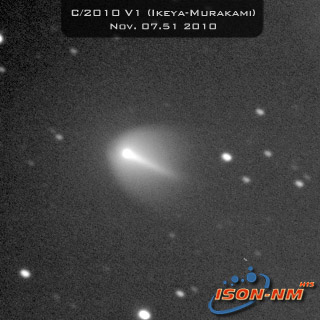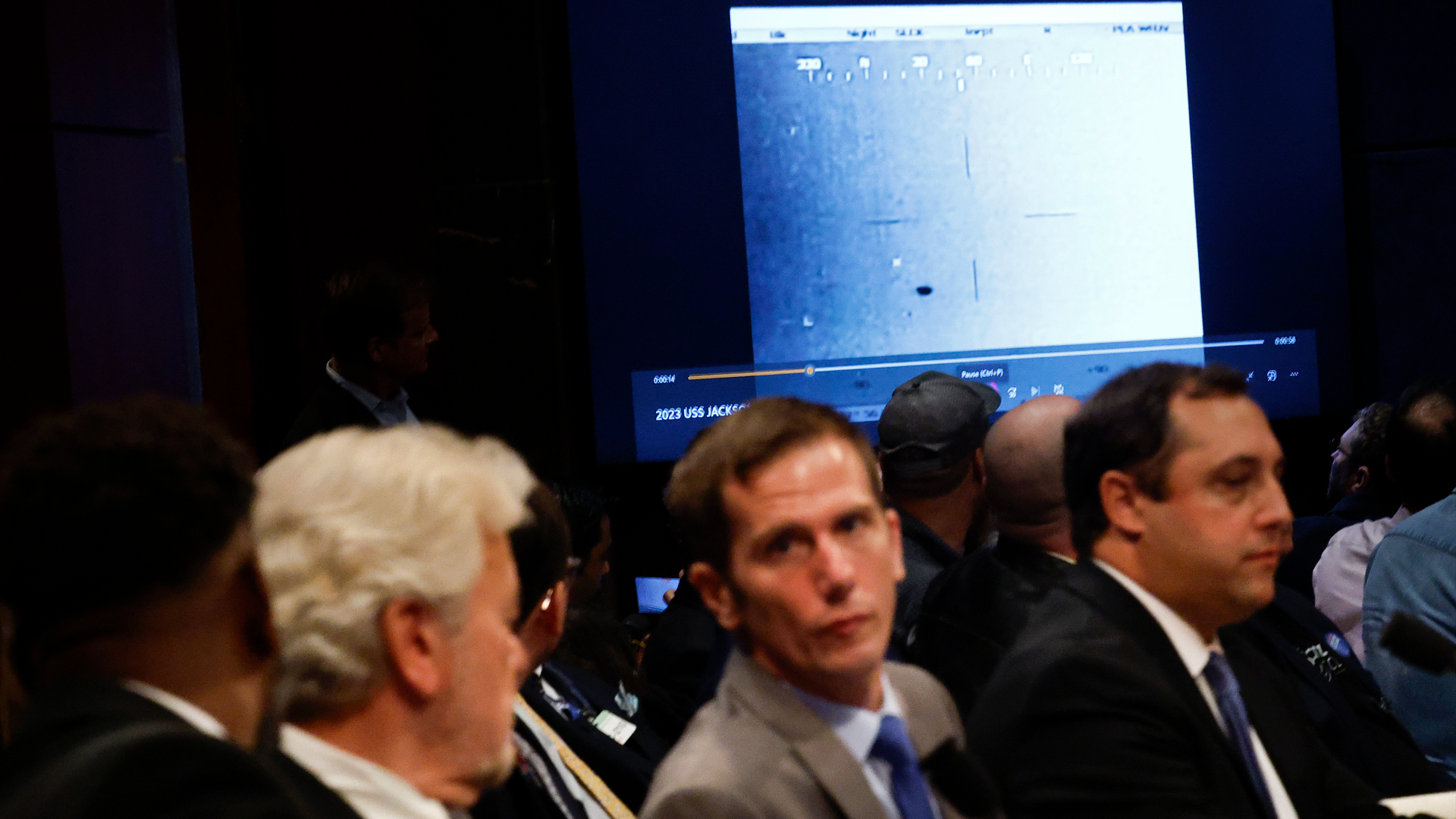Newly Discovered Fast-Changing Comet Visible in Small Telescopes

A newly discovered comet that has caught the attention ofskywatchers around the world appears to be undergoing some dynamic changes.
The comet, called Ikeya-Murakami (C/2010 V1), was firstdetected last week by amateur astronomers in Japan, but several other skywatchershave since been watching the icy wanderer's changing appearance over the lastfew days. [Photo: Comet Ikeya-Murakami (C/2010 V1)]
Russian astronomer Leonid Elenin, of Moscow, used theremotely operated ISON-NM telescope in New Mexico to observe the new CometIkeya-Murakami over the weekend.
"After the discovery, C/2010 V1 looked like a brightfuzzy ball, without details," Elenin told SPACE.com in an e-mail. "Butafter a few days, I was discouraged - [this] comet is rapidly changing."
The comet appears to brightening, signifying it could be inthe middle of an outburst, according to Spaceweather.com. While the cometcannot be seen with the unaided eye, it should be easily detectable with backyardtelescopes, the website added. Typically, however, finding a comet with atelescope can be tricky for those who are not familiar with sky charts and thenight sky.
Elenin said that in follow-up observations, the outer coma -the envelope of gas and dust at the head of the comet - had disappeared.
"But I saw an excellent inner coma, which looks likethe mini-version of the 17P/Holmes comet after its powerful outburst in2007," Elenin said. "Also we can see bright and sufficiently long tail."
Breaking space news, the latest updates on rocket launches, skywatching events and more!
Comet 17P/Holmeswas a small and very faint comet that overnight, in October 2007, became brightenough to see with the unaided eye. The comet, which was discovered in Nov.1892, surprised astronomers with its unexpected outburst, and what triggeredthe brightening is still not well understood.
Skywatcher Gregg Ruppel, from Ellisville, Mo., also recalledseeing the comet brighten in his own examinations.
"I learned of the comet shortly after its discovery andwas up early in the morning to image CometHartley 2," Ruppel told SPACE.com in an e-mail. "The new cometrose just before sunrise and was immersed in the light pollution and haze tothe east of my backyard observatory."
"But when I positioned my astrograph to the expectedlocation, there it was," he explained. "At first I wasn't sure if itwas a tail because I tracked the comet and the stars appear trailed. But itdoes seem to be in outburst mode as it brightened considerably over just a fewdays."
Comet Ikeya-Murakami (C/2010 V1) has been visible near thebrilliant ringed planet Saturn in recent days.
The comet and Saturn shine bright in a Nov. 5 photo taken byItalian skywatchers Luca Buzzi and Andrea Aletti of the G.V. SchiaparelliAstronomical Observatory just north of Varese, Italy.
"Iwas excited when I knew about this bright amateur discovery. I was right in myobservatory, doing my routine minor planets follow-up, and I hoped the skyremained clear to catch the comet a few hours later," Buzzi toldSPACE.com. "It's good that in this modern era, dominates by the bigsurveys, there is space left also for amateurs discoveries."
- Gallery:Stunning Comet Hartley 2 Photos From NASA's Deep Impact
- AstrophotographyTelescopes for Beginners
- FirstClose-up Photos of Comet Hartley 2 Reveal a Space Peanut
SPACE.com Managing Editor Tariq Malik contributed to thisreport.

Denise Chow is a former Space.com staff writer who then worked as assistant managing editor at Live Science before moving to NBC News as a science reporter, where she focuses on general science and climate change. She spent two years with Space.com, writing about rocket launches and covering NASA's final three space shuttle missions, before joining the Live Science team in 2013. A Canadian transplant, Denise has a bachelor's degree from the University of Toronto, and a master's degree in journalism from New York University. At NBC News, Denise covers general science and climate change.
